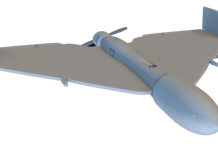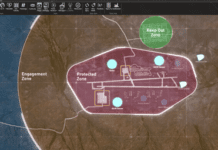
This post is also available in:
 עברית (Hebrew)
עברית (Hebrew)
Torpedo-killing torpedoes can be a real option. The absence of radar detection underwater removes the option of computing near-real-time flight paths needed so one missile can hit another. Still, some governments believe it can be done. Naval forces worldwide are trying to advance the idea of anti-torpedo torpedoes, with varying success, aiming to translate the promises of missile defense technology into undersea warfare.
If it works, the threat to surface ships by enemy submarines could be significantly blunted, changing a trend in naval capabilities that has defense analysts increasingly worried.
Defensenews.com elaborates on several examples. The German Navy has been using the SeaSpider interceptor torpedo, made by the ThyssenKrupp Marine Systems subsidiary Atlas Elektronik. A prototype of the system was installed on a multipurpose vessel for a successful December 2017 intercept test off Germany’s Baltic Sea coast. Following analysis of the data in 2018, Atlas said it was only now given government permission to publicize the event.
The Russian Navy is fielding the Paket-E/NK weapon, a dual-use torpedo that can be fired against submarines and incoming torpedoes.
In Turkey, defense contractor Aselsan successfully tested the Tork hard-kill torpedo in a project supported by the Scientific and Technological Research Council of Turkey.
In the United States, a similar project appears to have suffered a setback. According to the Pentagon chief weapons tester’s annual report covering 2018, the U.S. Navy last fall suspended the Surface Ship Torpedo Defense system that had been installed on aircraft carriers.
One of the key problems in building an anti-torpedo torpedo system lies in reducing false-alarm rates in characterizing objects as enemy torpedoes. Atlas Elektronik believes its SeaSpider can overcome that obstacle by combining signals from shipboard sensors with those picked up by the interceptor’s seeker.
“That’s the main challenge,” SeaSpider project head Thorsten Bochentin told Defense News.
In addition, the company touts the low cost of its system. The assertion comes as the missile defense community looks for cheaper alternatives to pricey interceptors — directed energy, for example.
According to Atlas Elektronik, the next step involves tests with the Navy’s WTD71 to deploy the SeaSpider from moving vessels. Additionally, engineers want to demonstrate its capability against wake-homing torpedoes, considered one of the most acute threats to surface ships against which there are few defenses.
Comment
I have read with great interest the article you have published regarding the development effort of a “Torpedo Countering Torpedos” for the sake of defending vessels against this old threat.
Without going into too much detail, I would like to mention that the demand for such a system has occured to me several years ago. I have also done some work on the subject (in a completely independent manner).
I have later published (end of June 1992) an article, in collaboration with Brigadier General Ivan Dror from the Israeli Navy, for the Underwater Defense Technology international conference, which was held in London. The conference has dealt with various aspects of underwater warfare, our article offered for the first time (as far as I know) the concept of short range, mini torpedos that are to be carried by submarines (or surface vessels) and are intended to intercept incoming torpedos, utilizing the incoming threat’s noise to successfully target the torpedo.
The article discussed the threat issue, it included an analysis of why “Soft Killing” (jamming or deceiving) solutions are not effective. An important point that we have emphasized was that the torpedo interceptor would work at relatively short ranges, therefore enabling lightweight interceptors. This would allow the defending vessel to carry a larger amount of intercepting torpedos.
In the September 1992 edition of the International Defense Review magazine, the publication has published a review of the above mentioned conference and a good summarization of our idea.
Although I have no idea if the various developers mentioned in your article (“Torpedo Countering Torpedo?”) have seen our article, it is important for us to mention, as they say in the academic world: “We have published first”.
Dr. Azriel Lorber
Aerospace Engineer

























